
An “ultra-wide” view of a Red Line car coming into Steel Plaza station, thanks to the five-megapixel “ultra-wide” auxiliary camera on Father Pitt’s phone.
Comments

An “ultra-wide” view of a Red Line car coming into Steel Plaza station, thanks to the five-megapixel “ultra-wide” auxiliary camera on Father Pitt’s phone.

All summer long, all the rail routes have been detoured through Allentown. Stop and consider for a moment how thoroughly odd Pittsburgh transit is: do you know of any other subway system that keeps up an alternate route over the top for times when one of the tunnels has to be closed?

The few riders who look up from their phone screens have a chance to notice that Allentown is changing. Over the past few years, the Warrington Avenue business district has been going through a rapid trendification. It’s full of weird little shops too low-budget for the high rents of Lawrenceville.

A bonus bus coming toward you, for the longtime fans.

While the trolleys are going over the top, they stop at Allen Street in the middle of the Allentown business district.
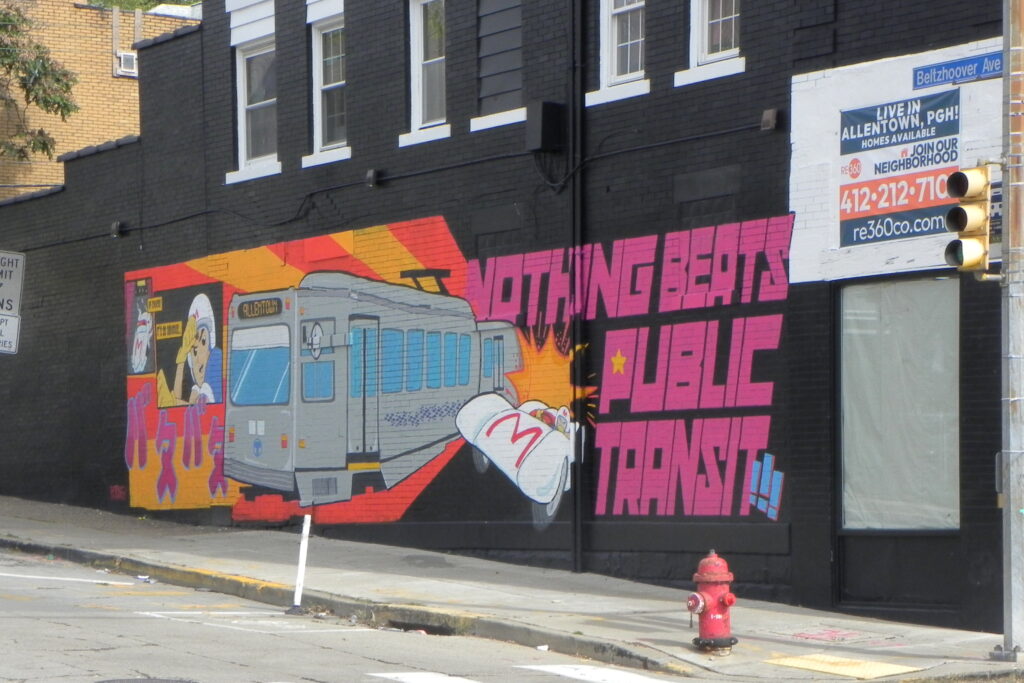
Many people in Allentown would like to have their Allentown Trolley back permanently. They have been enjoying their summer of streetcars.

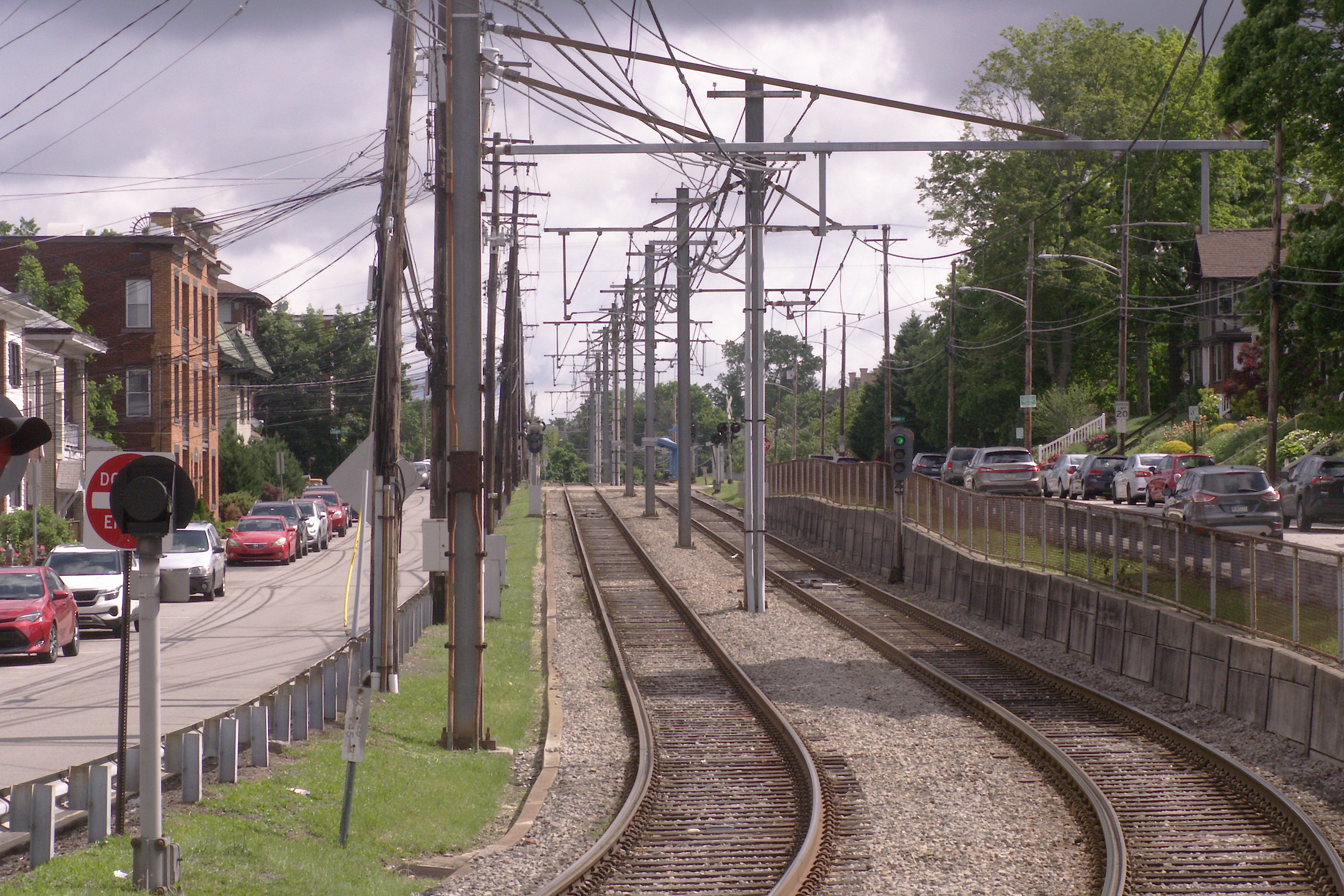
“Transit-Oriented Development” is a favorite catch phrase among urban planners. In the early twentieth century, it was just the way development happened. Most people used streetcars to get to work, to shopping, and to all their amusements, so of course development and transit had to go together. Here we see a typical pattern: a main spine street—in this case, Broadway Avenue in Dormont—divided in two parts, with a broad median for trolleys. Many neighborhood main streets were built this way. Red Line trolleys still run here in Dormont, and Silver Line trolleys on a similar plan in Bethel Park.
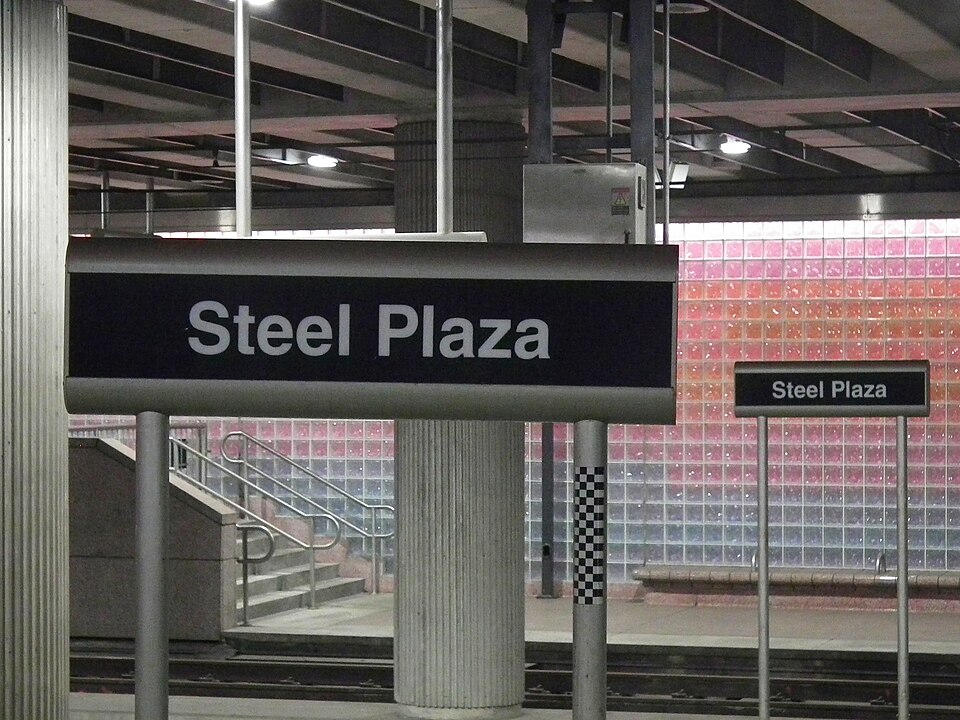
Following the example of Montreal, Pittsburgh had each of its subway stations decorated by a different artist. The neon installation in Steel Plaza, called “River of Light,” is by Jane Haskell.
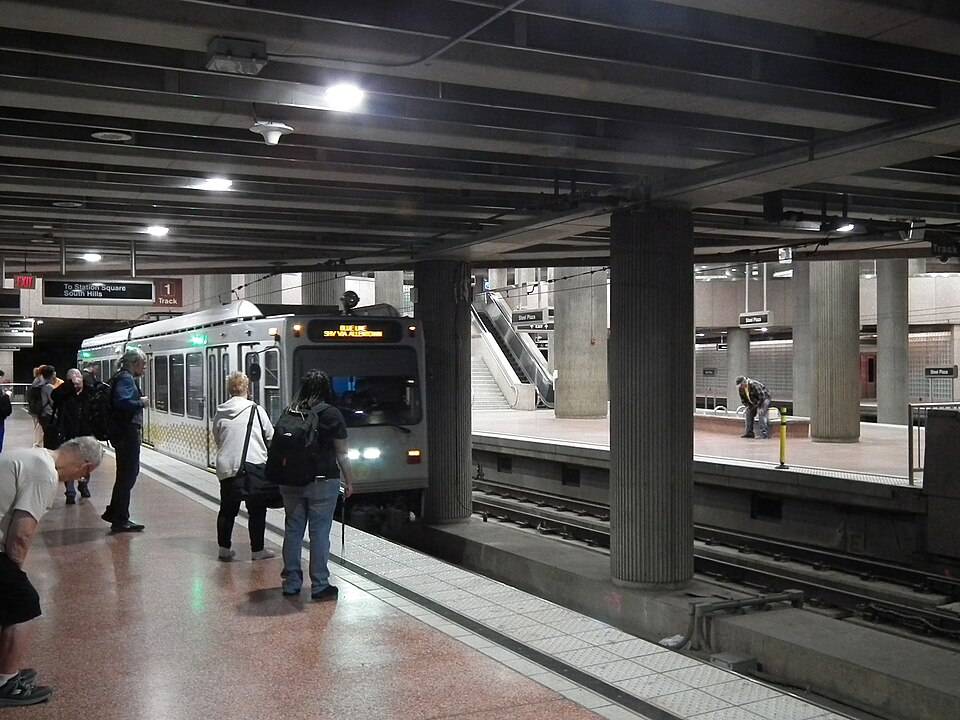
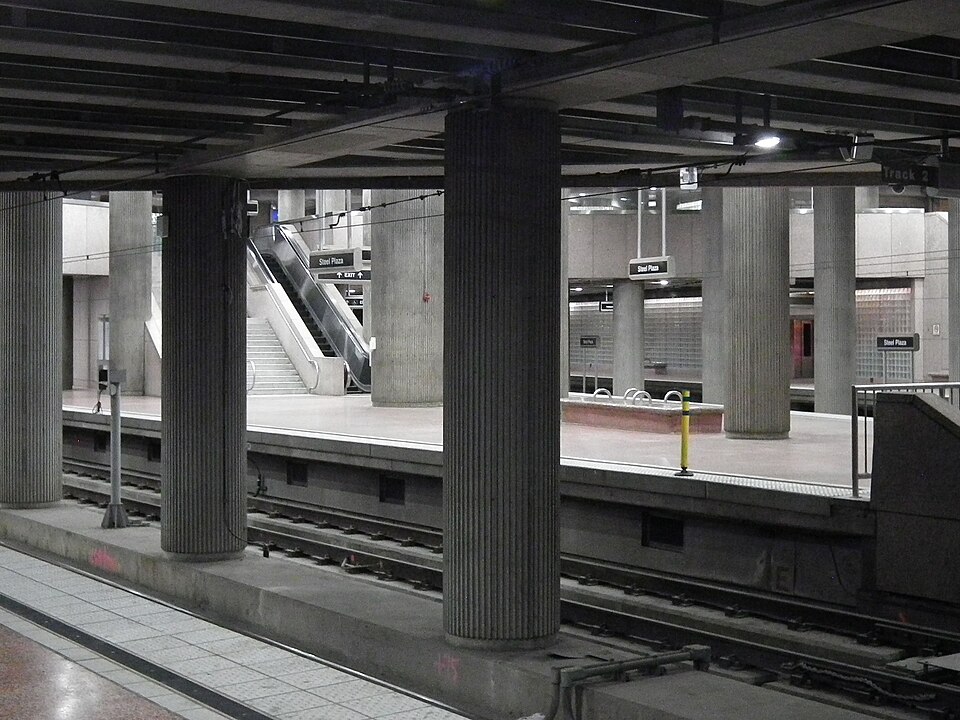
The style of the station itself combines Brutalism with Postmodernism.
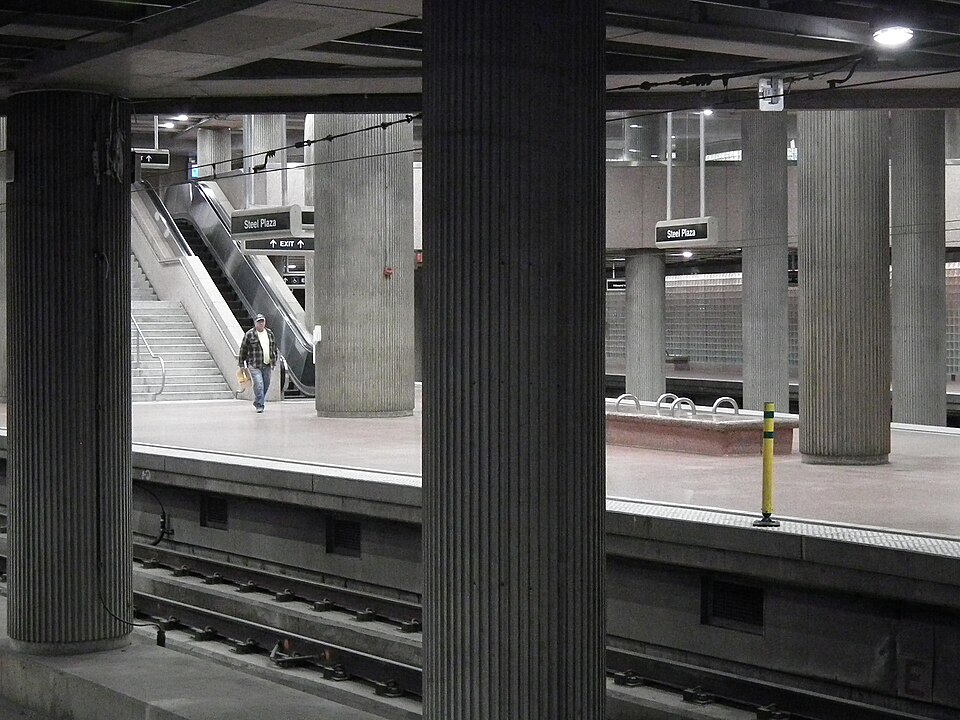
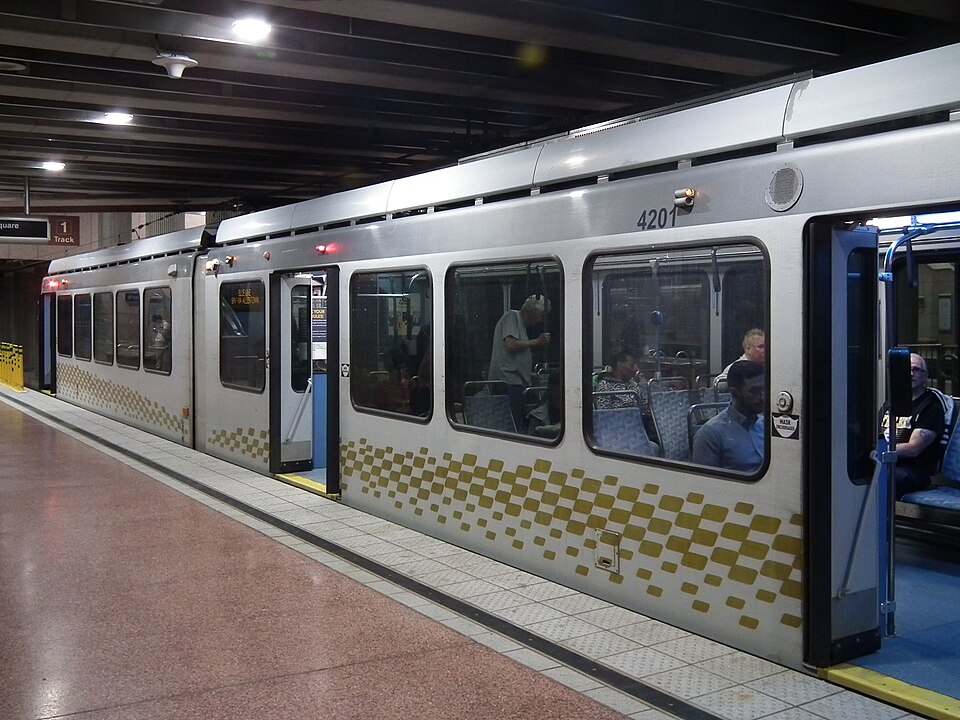
Trolley Number One, the very first car in the sequential numbering of current Pittsburgh trolleys.

Outbound car 4133 rounds the curve on Broadway, Beechview, in 1999, on route 42 (now the Red Line). The Siemens SD-400 car is in its original 1980s livery. It was later rebuilt as part of the 4200 series.
And that should be enough numbers to leave the trolley geeks drooling.


Back in 1968, the streetcar fan David Wilson from Oak Park, Illinois, USA, took this picture of a PCC car in front of the freight office for the Pittsburgh & Lake Erie Railroad. Except for looking cleaner, the building hasn’t changed much. Streetcars no longer pass in front of it, but they stop diagonally across the street at the Station Square station.


This odd little building in the middle of a gravel lot is a remnant of the largest streetcar system in the United States.

We’ve already seen this picture of Arlington Avenue with the Route 48 streetcar poking its head out of the streetcar loop. That loop is still there, though the tracks have been taken up. You can see this little shelter right behind the trolley in the 1968 picture.
In the 1960s. Pittsburgh had the largest remaining streetcar system in the country. We had lagged behind other cities in converting to bus transit, but the Port Authority, newly responsible for the transit system, was canceling streetcar lines right and left. (Some lines have survived—the lines that had their own right-of-way for most of the route, and thus would have been expensive or impossible to convert to buses.) The Arlington line would not survive long after that picture; the Route 48 streetcar became the Route 48 bus.

Here the Route 48 bus passes a mural with a picture of its predecessor, the Route 48 streetcar. The “Arlington Memories” murals are fading and will soon be memories themselves. The Route 48 streetcar line used to make a loop around the shelter and head back inbound on Arlington Avenue.






Arlington Avenue was already looking a bit bedraggled in 1968, when David Wilson, a streetcar fanatic who documented the streetcar lines of Pittsburgh with hundreds of pictures, caught the Route 48 car peeking out of the streetcar loop.
Most of the buildings in this picture are still there on Arlington Avenue, but the Arlington business district has mostly been abandoned by business. The storefronts that are not empty have been filled in for apartments.


This one, with a much-altered ground floor, is still going as a convenience store. Because the street plan in Arlington is irregular, many of the commercial buildings on Arlington Avenue are odd shapes.


This little storefront has been filled in by a contractor who had no need of a busybody architect to tell him what to do. The original building is a pleasing little composition by someone who might have seen some of the German art magazines that circulated among architects in Pittsburgh.

A little of the Kittanning brick facing has come down from the front of this building, revealing the cheaper ordinary brick behind it.









Now, about that streetcar loop: we’ll be seeing that very soon, because it is still there as well, or at least partly so.